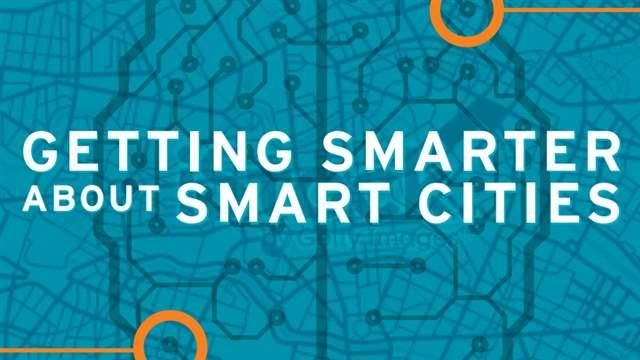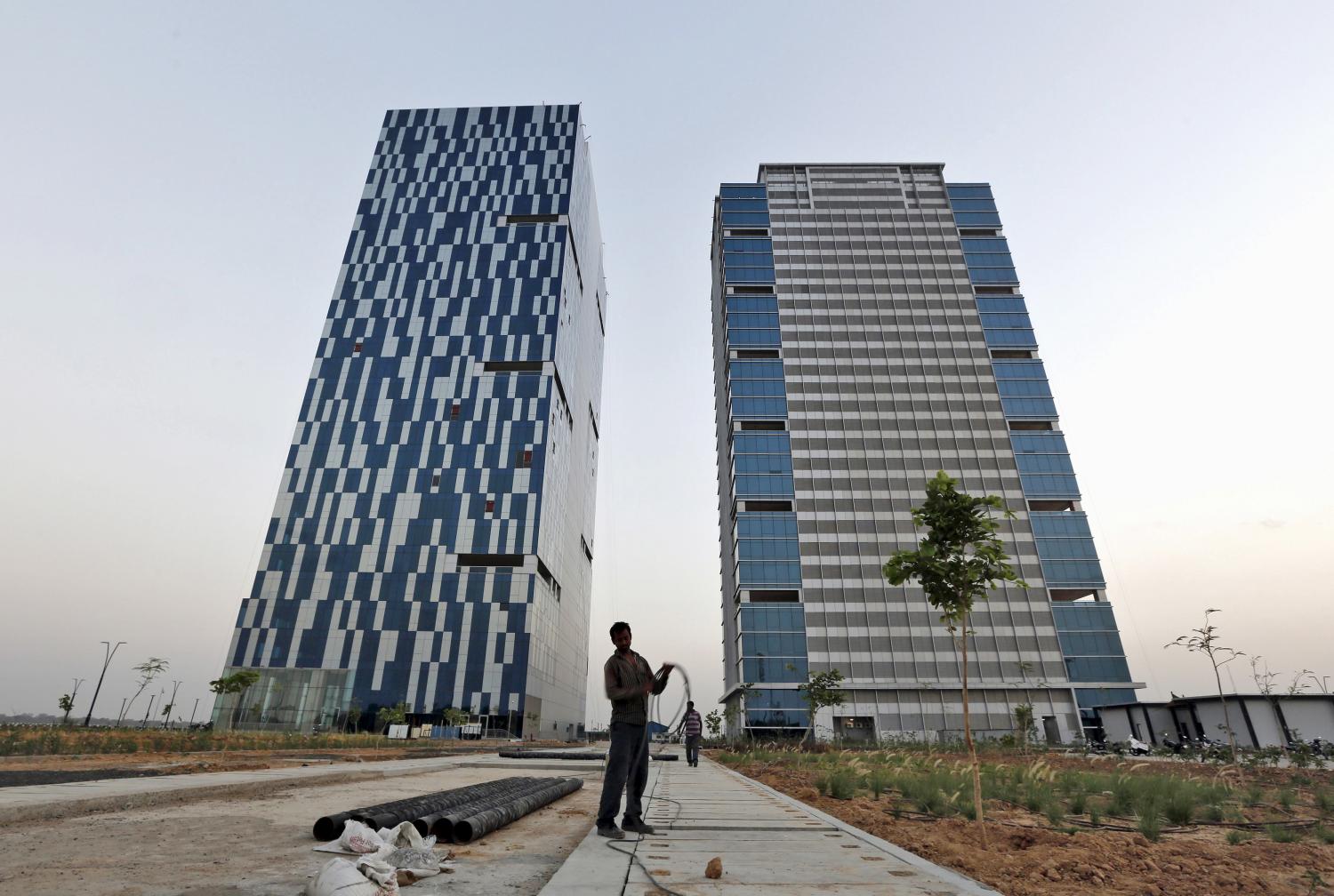Over the last five years, the concept of the technology-driven “smart city” has captured the imagination of public, private, and nonprofit leaders alike. Yet for the rapid rise in interest, smart city deployments have failed to meet both private sector firms’ adoption ambitions and the public sector’s expectations for impact. Against this backdrop, the Brookings Institution’s Metropolitan Policy Program and Barcelona’s ESADE Business School brought together officials from cities throughout Europe, Canada, and the United States to better understand the promise and practice for smart cities around the world today.
The discussion is timely as cities are responding to myriad pressures (e.g. population growth, climate change, fiscal stress) by seeking new more efficient ways of operating through the use of information and communications technologies. These investments in digital infrastructure are designed to improve the way we manage the built environment and confront the challenges of urbanization. From mandating the construction of energy efficient buildings to creating intelligent transport networks, cities are seeking to become “smarter.”
The tantalizing prospect: Cities across the globe use technology to manage urban congestion, maximize energy efficiency, enhance public security, allocate scarce resources based on real time evidence, and even educate their citizenry through remote learning. At stake are not just greater livability and sustainability but the jobs and investment that accrue to communities at the cutting edge. Cities and regions must consider whether they will be able to economically compete and sustainably grow without fully integrating digital technology into their built environments.
However, there is still much work to be done to make smart city development the norm rather than the exception, and to match the deployments to the hype.
The Brookings/ESADE discussion consisted of a two-day workshop to investigate how public sector innovations can contribute to this effort. The first day included a public event featuring civic leaders from North America and Europe that are using emerging technologies to make the most of their limited budgets, accelerate the implementation of new digital solutions, and grow their metropolitan economies. On the second day, participants representing eight cities across two continents contributed to a private working session further investigating these issues. The sessions included short presentations by city leaders, small brainstorming group exercises, and large-scale conversations.
What follows is a distillation of the key themes and takeaways from the workshop.
I. Smart Cities Begin with an Economically-Driven, Technologically-Focused Vision
Participants agreed that a city’s ability to achieve “smart” status must begin at the planning stage. Smart cities know what they want to be; they have an overarching economic vision based on a true assessment of their strengths, challenges, and opportunities. Smart cities will then harness the power of technology to bring their economic vision to fruition. Edmonton is a clear leader in this area, using technology programs throughout the six strategic plans contained in its City Vision 2040effort to design and achieve the city’s long-term economic strategy.
Cities in general should prepare their economic visions without the expectation of national government assistance. Washington’s fiscal pull-back, plus the lack of related federal grant programs, puts the onus on local authorities to locate and secure capital funding. In Europe, the combination of austerity measures and slow-growing national economies often leave cities as the most capable investor. Yet this call for local responsibility should be seen as an opportunity. The lack of national guidelines and capital programs provide latitude to craft a city economic vision unique to their goals and needs.
On the business side, there is a major flaw in the current market. The typical business agenda is for private firms to approach cities with available solutions. However, both cities and firms have found this approach to yield unsatisfying results, even though both public officials and firm representatives agree the solutions could improve city operations. Only by first establishing a comprehensive economic vision can cities know what products to demand and what policies to adopt—leading to a growing marketplace for all parties.
II. A Successful City Vision Must Address Three Key Economic Drivers
Simply drafting a technology-focused economic vision is not enough, however. A successful vision will also explicitly use technology to pursue three key drivers for any healthy economy.
The first is productivity: A city’s economic vision must support aggregate economic growth and promote efficiencies throughout the public and private sectors. Multiple panelists referenced the concerted effort by New York City to grow its tech and information industries in support of the city’s long-term economic health. These policies range from large-scale public investments, like the multiple Applied Sciences campuses, to facilitating venture capital fundraising. A productive economic vision also will target the public sector’s technology base—most notably departmental web sites and their services—to create government efficiencies, which reduce costs for the entire marketplace.
The second is inclusivity: A vision must support opportunity for all firms and citizens. To extend the previous example, broadband is equally important to the future economic success of households as well as its businesses. So as Los Angeles and other markets explore providing their public school students with tablet computers, for example, every child should have the opportunity to use broadband in their home and take full advantage of modern computing capabilities. Education extends to adults, too, as implementing smart city investments can provide a platform to train workers for 21st century employment opportunities. Likewise, open data policies can inspire new city solutions and grow local companies, all without the failings of privileged access.
The third is resiliency: A vision must support a more sustainable built environment. While city cores are often energy efficient by design, cities and their suburbs still generate more aggregate carbon than other parts of the world. At the same time, their dense collections of people make them especially susceptible to the natural disasters and other long-term environmental concerns related to climate change. A smart city will understand its global responsibility to adopt sustainable policies and make environmentally-friendly investments. Fortunately, technology is a great enabler in this space. From cutting edge coastal flood management in the Netherlands to Edmonton’s The Way We Green environmental plan, a smart city vision is the perfect way to make an economy more resilient through the use of technology.
III. Cities Must Reform Government to Successfully Implement Their Economic Vision
Developing a focused, forward-looking economic vision that targets long-term productivity, inclusivity, and resiliency is the first step in making cities smarter. Yet those same cities also need to make sure their internal structures can support that vision, meaning purposeful integration between technology and sustainability departments and their peers in other agencies. Participants felt that widespread changes needed to occur in the prevailing governance structures of most cities.
By breaking down silos and formalizing collaboration among different city agencies, in particular, participants thought leaders would be better equipped to handle smart city activities and address their ongoing technological needs. Philadelphia, for instance, found it especially useful to hold formal meetings and coordinate efforts across a distinct set of local actors, including enhanced neighborhood-level communications. Mayors, economic development officials, and smart city staff members are also among the many individuals across cities that need to work together in pursuit of their collective economic goals.
Yet as technology departments become more integrated into long-term decision-making, participants agreed that procurement reform is critical. An example found in multiple cities was the inability to allow firms selected to build technology pilots to also bid on larger rollouts. This counterintuitive policy actually stalls innovation, rather than supporting it. Procurement gatekeepers must understand that growing a smart city relies on cutting-edge technologies, and typical rules may need tweaking. This is true in Chicago and Philadelphia, where genuine procurement reforms targeted at government and tech producers are underway.
Participants also championed the idea of integrating technology into long-range economic development plans, specifically as means to secure funding for smart city projects. Toronto’s waterfront project will revitalize a massive area by pursuing increased economic competitiveness, a more sustainable environment, and a more livable mega-neighborhood. Critically, it includes an innovation agenda that prioritizes technology-driven infrastructure upgrades. By including these innovation elements within the original vision, the massive waterfront project unlocks funding streams for specific tech projects and helps forge integration between technology agencies and other city departments—all tenets of a smart city. Integrating smart city technologies with long-range plans is especially helpful in maintaining funding around ad hoc projects.
To reform government and integrate more technology projects into development efforts, participants agreed that broadband can springboard these efforts. Much like electricity and phone lines of the 20th century, every industry and household will require access to broadband to reach their full potential in the 21st century. That makes city technology leaders, and their partners in sustainability offices, critical actors moving forward. It’s why efforts in cities like Los Angeles to expand broadband access and fiber deployment citywide will both increase city competiveness in the coming decades and strengthen the role of technology within local government decision-making. It also means departmental heads responsible for broadband should be included in nearly all economic development plans.
IV. Cities Must Balance the Relationship between Project Scale and Risk Tolerance
Alongside establishing an economic vision and reforming government, a smart city also recognizes the appropriate scale to deploy technology investments and how to measure that scale against public executives’ risk tolerances. Scale and risk management are key elements to address political, logistical, and financial barriers.
While local governments are the crucial public sector actor in the smart city space, not all projects and plans should encompass the entire city. Particular medical, innovation, or advanced industry hubs may demand specific smart city tools that do not yet need to be scaled to the entire city to make a meaningful difference. For example, providing access to lab or incubator space in a specific district, such as 22@Barcelona or the Boston region’s Kendall Square, can fulfill economic development needs based on distinctive market advantages that leverage their neighborhood-level scale. After demonstrating proven demand in smaller, often business-focused districts, technologies like smart meters or electric vehicle charging stations can be expanded to an entire city.
Scale is critical to project financing, too. Places like Amsterdam are utilizing public-private partnerships to spread the risks and rewards of smart city technologies between the government and business communities. Other cities are working actively to break down the traditional barriers between bureaucratic silos. San Francisco’s approach, seen through their climate plan, is to bring together stakeholders across multiple agencies to define priorities and align goals. Toronto is pursuing both courses by partnering with both the state and national government to unlock $500 million in capital, which will further stimulate $700 million in private investment.
In the process of designing projects’ geographic and financial scope, smart city leaders must also consider risk tolerance within their communities. A major consideration is political timelines. Many markets could be first movers—both on projects and policies—and elected officials may be resistant to production pipelines that may exceed their time in office. Similarly, some executive leaders may be resistant to large projects with broad geographic reach and price tags to match.
V. Cities Require Stronger Networks and Improved Communication Tools
In light of the governance, scale, and other implementation hurdles, participants voiced the need for strong networks of leaders to drive smart city policies and investments. Representatives from the public and private sector should play a lead role forming these networks, to be sure, but they must also extend to include civic actors and other infrastructure users. Technology, as such, can serve as an effective convener, broker, enabler, and igniter for a host of interests.
Participants also articulated the need for more city-to-city collaboration in strengthening these networks and completing projects within their own jurisdictions. Through expanded partnerships—both formal and informal—cities can spread best practices, embrace new technologies, and replicate other creative solutions adopted elsewhere. For example, San Francisco recognizes how networks can facilitate the efficient adoption of technologies and consistently identify “pain points” in existing urban centers. The Urban Sustainability Directors Network was highlighted as an organizational model. Participants also recognized European cities have a clear advantage in this realm, as European Commission programs like Smart Cities and Communities help build networks through formal communication and grant-making authority.
At the same time, generating public support remains a key component in these engagement strategies. As cities pursue new kinds of smart city projects over time, leaders will need to define these efforts clearly through a “common language” and explore novel ways to galvanize public interest. Effective marketing means most citizens have heard of smart cities or something similar, but few understand what it means. Greater transparency in technology deployment not only educates citizens on the tangible costs and benefits of smart city improvements, but also makes it easier to advance similar upgrades in years to come.
Conclusion
Twenty-first century technologies offer newfound promise for the future of cities: more efficient resource usage, greater connectivity between people and places, and broader opportunity for all. They also promise a competitive and sustainable edge relative to other cities slow to adapt. But achieving those impressive goals will require more than major capital investments and bottom-up innovations. Cities need a clear vision for their economic future, one that is grounded in reality and leverages unique local assets. Only with such a vision, and the accompanying policy framework, can cities truly deploy technology in the smartest ways possible.
The Brookings Institution is committed to quality, independence, and impact.
We are supported by a diverse array of funders. In line with our values and policies, each Brookings publication represents the sole views of its author(s).









